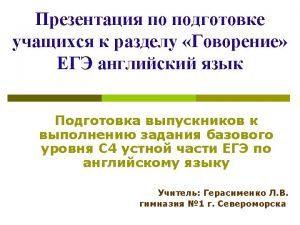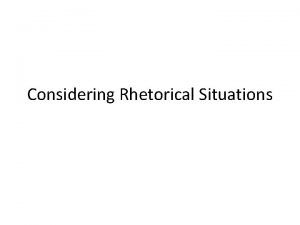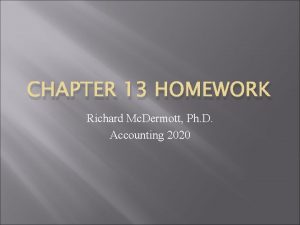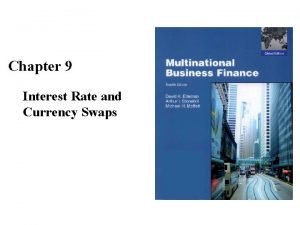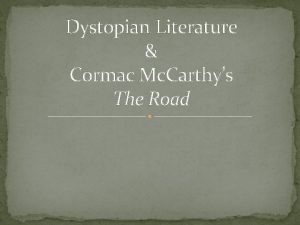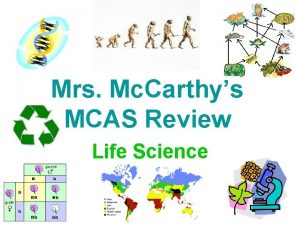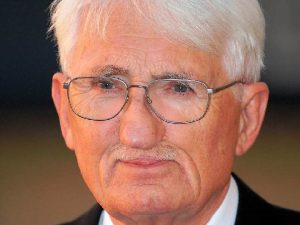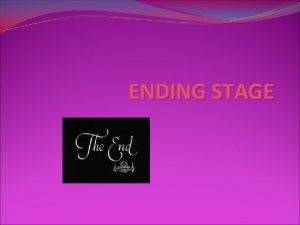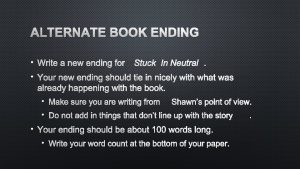The Road Exploring Mc Carthys ending and considering












- Slides: 12

The Road Exploring Mc. Carthy’s ending and considering the variety of interpretations

As we move towards the end of the novel, the imagery of death becomes more prominent. Just after they see the boat (p 237): “The bones of seabirds. At the tide line a woven mat of weeds and the ribs of fishes in their millions stretching along the shore as far as eye could see like a isocline of death. One vast salt sepulchre Senseless. ” A place made of stone in which dead people are buried Tightly compressed: a geological fold with rock beds that slope in the same direction

Symbols of hope or despair? 1. Name of the ship: Bird of Hope – what hope does the ship provide? 2. The sextant: “the first thing he'd seen in a long time that stirred him” (p. 243) – what could this represent? 3. The flare (p. 257): what might this represent? (p. 263) – what is the significance of this conversation?

The Thief p. 273 -278 How does this incident create a conflict between the man and the boy? • How does the language create sympathy for the thief? • Why does Mc. Carthy do this? How does he position the reader? • What is the significance of the boy’s reactions? – “Yes I am, he said. I am the one. ”

What is the significance of this section? A sound without cognate and so without description. Something imponderable shifting out there in the dark. The earth itself contracting with the cold. It did not come again. What time of year? What age the child? At a crossroads a ground set with dolmen stones where the spoken bones of oracles lay moldering. . . What will you say? A living man spoke these lines? He sharpened a quill with his small pen knife to scribe these things in sloe or lampblack? At some reckonable and entabled moment? He is coming to steal my eyes. To seal my mouth with dirt.

What is the significance of this section? The first part of the passage relates to the oral tradition of humans, their storytelling ("living man spoke") and to their literate storytelling as well (literature and narrative written with a quill) However, the one who comes to steal the man's eyes or to seal his mouth with dirt is preventing human communication, getting in the way of seeing others’ writing and getting in the way of speaking. It appears that the so-called living man is the same one who returns to destroy communication. This perhaps alludes to death. In death, the man will be unable to narrate his own story and to validate the reality of his existence, and whatever he wrote comes to nothing. The living man wrote the lines for himself and his time, not for the ones whose mouths will be sealed with dirt. It is a cynical, dejected view of storytelling that probably fits the protagonist father’s present worldview. The father’s stories are no longer of interest even to his son, who realises that the stories of helping others do not match reality. See p. 286 -288.

The Father’s Death As the father’s death approaches, Mc. Carthy starts to indicate a role reversal between the man and the boy. p. 292 – the boy listens to the man breathing as he sleeps p. 295 – “what are we going to do, Papa? he said. ” (Who says this? ) p. 297 – the boy smells wet ash on the wind p. 299 – “it’s okay, Papa. You don’t have to talk. It’s okay. ” p. 300 – the narrative continues after the father’s death How can we link these to any of our themes?

The boy’s goodness As the man’s death approaches, the boy is increasingly described in language which makes him seem holy. Find references on the following pages: p. 293 p. 296 p. 297 p. 298 How can we link these to any of our themes?

“Goodness will find the little boy. It always has. It will again. ” (p. 300) Why is this quote significant? What happens next? Has goodness found the little boy? – Evidence for? Evidence against?

Once there were brook trout in the streams in the mountains. You could see them standing in the amber current where the white edges of their fins wimpled softly in the flow. They smelled of moss in your hand. Polished and muscular and torsional. On their backs were vermiculate patterns that were maps of the world in its becoming. Maps and mazes. Of a thing which could not be put back. Not be made right again. In the deep glens where they lived all things were older than man and they hummed of mystery. (p 307)

The Trout • Read the last paragraph of this novel about the trout in the stream. • What is Mc. Carthy saying here? • Why do you think he used these thoughts to end the story? • Do you think Mc. Carthy ended the story with a hint of hope or do you think he meant to suggest that there was no hope left in the world?

Critical Review • Read the critical review of The Road. • As you read, annotate the article. Feel free to mark comments you agree and/or disagree with. • Once everyone has finished reading, get with a partner and discuss either one thing you agree with or one thing you disagree with and why. • Be prepared to defend your arguments!
 What is paved and unpaved road
What is paved and unpaved road Nnnn ranch
Nnnn ranch Study the advertisement you are considering
Study the advertisement you are considering Considering the rhetorical situation
Considering the rhetorical situation Imperial jewelers is considering a special order for
Imperial jewelers is considering a special order for Johnny's lunches is considering purchasing a new
Johnny's lunches is considering purchasing a new You are considering buying some flowers
You are considering buying some flowers Considering interestrate swaps, the swap rate is
Considering interestrate swaps, the swap rate is Hình ảnh bộ gõ cơ thể búng tay
Hình ảnh bộ gõ cơ thể búng tay Ng-html
Ng-html Bổ thể
Bổ thể Tỉ lệ cơ thể trẻ em
Tỉ lệ cơ thể trẻ em Voi kéo gỗ như thế nào
Voi kéo gỗ như thế nào


